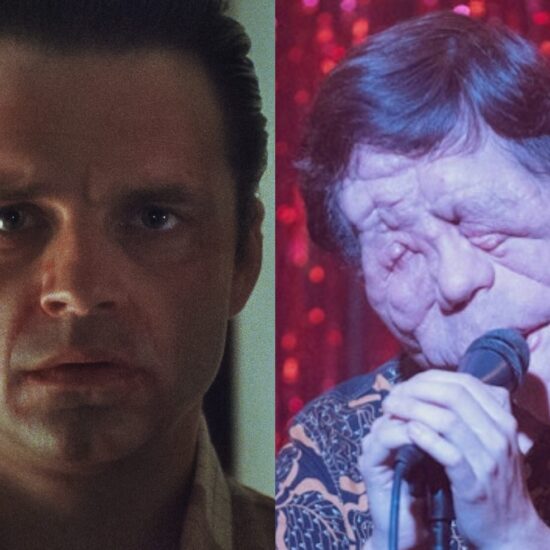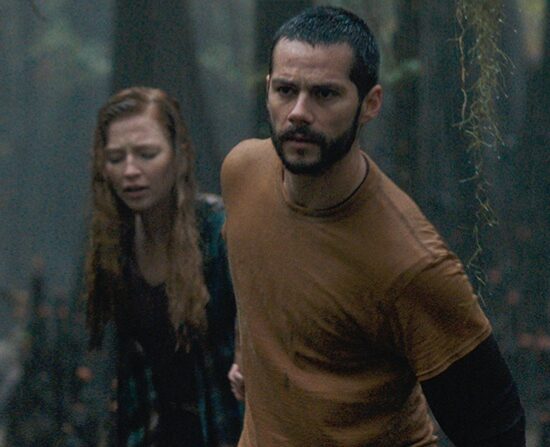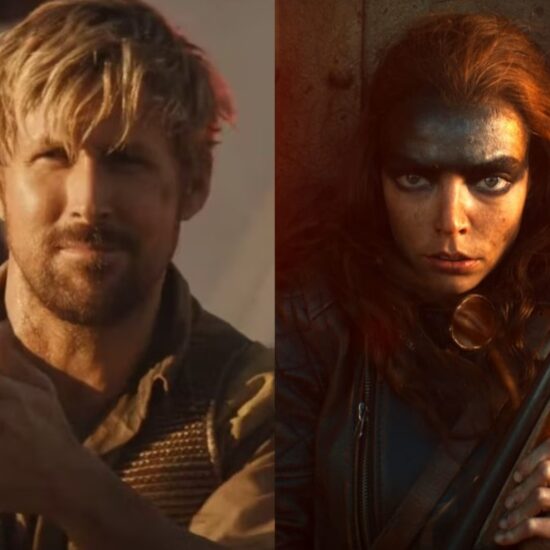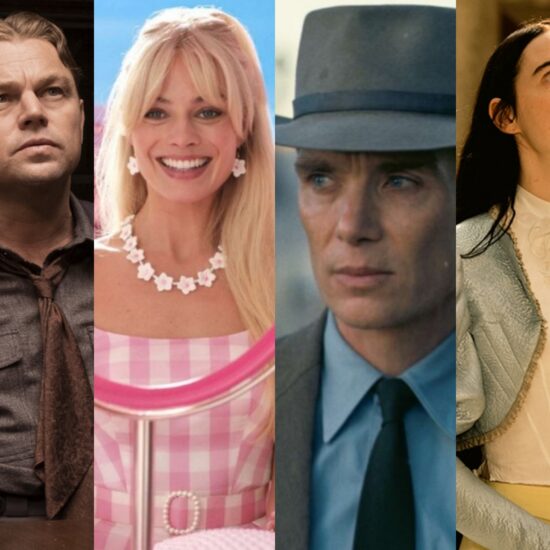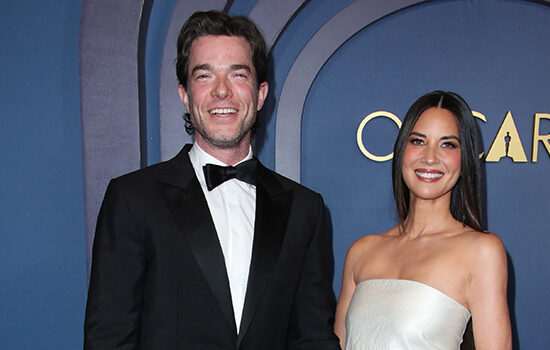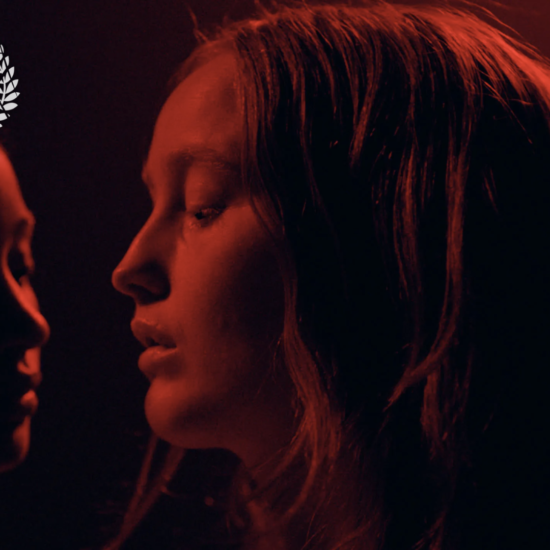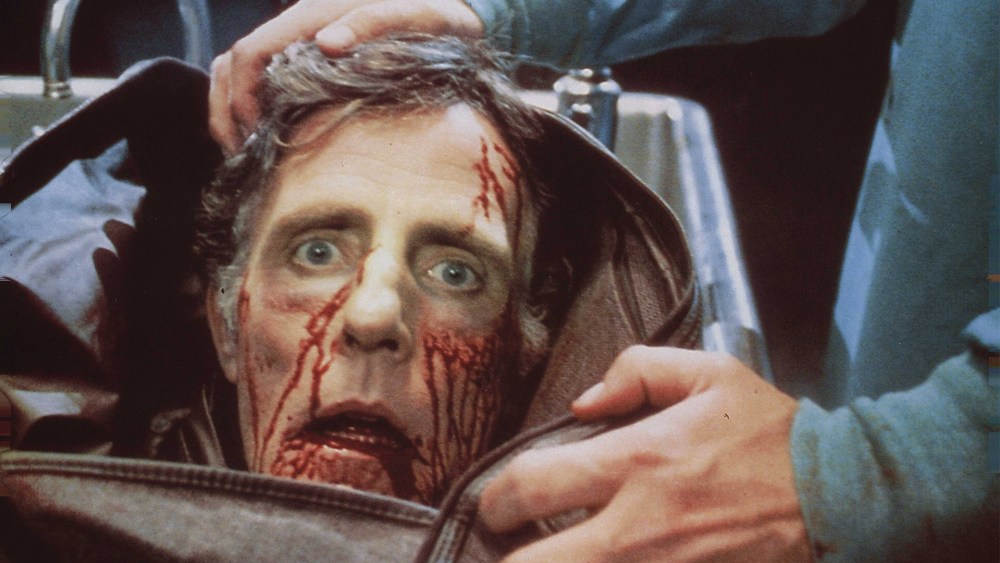
Stuart Gordon is known as a master of horror, earning the title from his work on such seminal 1980s genre films as “Re-Animator,” “From Beyond” and “Dolls.” But the director, who died in March 2020, was also a master storyteller — so his family can be forgiven for sometimes wondering if he was prone to fabulation.
“I would compare it to the movie ‘Big Fish’ in how someone might exaggerate,” recalls Jillian Gordon, one of his three daughters. “He would tell you these stories and you’d think, ‘Is that really what happened?’ It was only after he passed and I was going through his emails and archives that I realized it was all true.”
Indeed, Gordon made movies, but his own life had enough twists, turns and serendipitous encounters to be its own film. And now those stranger-than-fiction tales will be shared with audiences when his memoir, “Naked Theater and & Uncensored Horror,” is published in September by FAB Press. For horror fans, the book contains plenty of behind-the-scenes tales about the making of Gordon’s cult classics — and comes with an afterword from his “Re-Animator” star and frequent collaborator Jeffrey Combs.
Courtesy Image
But readers will also learn the stories of Gordon’s early years in experimental theater — from his nude production of “Peter Pan” in college, which found him arrested on obscenity charges, to founding Chicago’s Organic Theater Company, where he collaborated with burgeoning actors and future household names like Dennis Franz and Joe Mantegna and directed the first production of David Mamet’s breakthrough play “Sexual Perversity in Chicago.”
Told with the offbeat humor and style that was a signature of so much of Gordon’s work, the memoir doesn’t just focus on the horror. It also presents a decades-long love story between Gordon and his wife, Carolyn Purdy-Gordon, whom he met after drunk dialing a number from his college campus directory. Married in 1968, the two would go on to collaborate many times on stage and screen — in fact, she frequently met a grisly end under his direction. “It is true he developed a habit of killing me off in his movies,” Purdy-Gordon notes. “But we had a wonderful marriage, so go figure.”
Purdy-Gordon says her husband began working on the memoir in 2013, after penning several stories for various blogs and publications. While nothing in the book surprised her, she concedes she might have a different perception of some of the events described. “Over the years, he would read passages to me aloud. Sometimes I would stop and say, ‘This is not the way I remember it’ or I’d offer some factual correction,” Purdy-Gordon says with a laugh. “He would tolerate a few of these. But if there were too many, he’d say, ‘Why don’t you write your own damn memoirs?’”
Interspersed with the tales of creating monsters and bloodshed, these personal stories paint a portrait of a loving husband and doting father to daughters Suzanna, Jillian and Margaret. Jillian Gordon notes the apparent contradiction between work and home life gave her a happy if unusual childhood. Not many kids lived in an Italian castle that also doubled as the set for the 1995 film “Castle Freak,” in which a family is stalked by a disfigured monster. “I’d be in my room, and he would say, ‘So, don’t open this door because you’re going to see a creature running around and it’s the scariest thing ever, OK?’” she recalls. “‘And don’t worry about the screaming.’”

Stuart Gordon and Carolyn Purdy-Gordon at their 50th Anniversary celebration flanked by daughters Margaret, Jillian and Suzanna.
Courtesy Image
William H. Macy says this dichotomy was vital to Gordon’s work: “He was a loyal friend and a family man with the most infectious laugh. He did the most horrifying stuff on stage and screen, but it worked because of his sense of irony and because of Stuart’s true humanity.”
Though the two became friends in Chicago in the 1970s, they didn’t work together until the 2005 film adaptation of the Mamet play “Edmond.” It’s a relentless tale of one ordinary man’s descent into darkness, and Macy admits the story isn’t easy to summarize. “I would tell people, ‘It’s about a guy who loses his mind, goes on a bender and ends up killing a waitress. And then things go bad.’”
Citing it as one of his most challenging roles, the actor says the wrong director could have made the indie shoot unbearable. “Stuart created a very lovely, safe environment no matter how ugly the story could get,” Macy notes. He recalls shooting a scene where he had to walk naked through a prison wearing only a modesty sock. “It’s always a thrill to take off all your clothes in front of a bunch of Teamsters and guys who are catcalling you. At one point, Stuart yelled cut and called me over. He said, ‘Bill, I don’t know how to say this. But could we get a shorter sock?’ Everyone burst out laughing, and all the tension was gone.”

With William H. Macy on the set of “Edmond.”
Gordon’s provocateur nature wasn’t for everyone — including those who loved him most. The first show he staged while a student at the University of Wisconsin was called “The Game Show,” a play on “Let’s Make a Deal” and the ilk that he sought to make as uncomfortable as possible. That included turning up the heat in the theater and pretending to chain the doors, trapping the audience inside. Contestants were humiliated or even beaten while ushers walked the aisles with billy clubs, threatening anyone who might leave. As it turned out, all the participants were actors, but the unknowing audience revolted. Purdy-Gordon even broke up with him over the show, calling it irresponsible. Still, the production was hailed by a local critic as “revolutionary” and the entire run sold out.
One of the show’s audience members was future Tony winner André De Shields, then a fellow student and years away from cementing himself as a Broadway legend in shows like “Hadestown” and “Ain’t Misbehavin.’” “I fell for the whole thing,” the actor recalls. “I was one of those who stood up and yelled, ‘Stop! You can’t do this!’”
De Shields would go on to work with Gordon multiple times, playing Tiger Lily in the infamous “Peter Pan” production and appearing in several shows at the Organic. In fact, it was Gordon’s production of “Warp!” a wildly successful sci-fi epic, that gave De Shields his Broadway debut when the show transferred in 1973. Though the show only ran eight performances, De Shields stayed — and flourished — in New York.
“Warp!”, which predated “Star Wars” by several years, was just one incident where De Shields believes the director was prescient. He also cites a college production of “Titus Andronicus” where early humans gathered around a campfire grunting. “No less than a year later, I saw Stanley Kubrick’s ‘2001: A Space Odyssey,’” says De Shields. “And I saw that scene that opens the film, I thought, ‘My God, Stuart is ahead of his time.’”
Even years later, De Shields reveals, he has fond memories of their work together. “When I think of Stuart, I think of how he is intertwined with my destiny,” De Shields says. “I don’t get lost in nostalgic memories daily. But when I have to consider what I’ve done, there is a very important page in the book of my life that has to do with Stuart Gordon and the Organic Theatre Company.”

(From left) Meshach Taylor, Joseph Martinez, Joe Mantegna, and Dennis Franz in the Organic Theatre Company’s production of “The Wonderful Ice Cream Suit.”
The same can be said of George Wendt, who met Gordon in Chicago when the future “Cheers” star was active at the Second City comedy theater. The two collaborated through multiple movies, all the way through “Re-Animator: The Musical,” the award-winning stage adaptation that debuted in 2011 and played all over the world. A critical and commercial hit, the show used practical effects to re-create some of the film’s most memorable scenes and even had the first few rows designated as a “splash zone” due to the blood effects that would spray on the audience.
“Working with Stuart was always a blast,” Wendt recalls. “Fun and challenging in the best way. He would work tirelessly and tirelessly until he got it. Sometimes he would send me the most outlandish ideas for a script, and I’d go, ‘That’s great, Stuart.’ As soon as I hung up the phone, I figured I didn’t have to worry about it, because it was never going to happen. The next thing you know, he’d call me up and say we were making it.”
As with his wife, Gordon had a habit of killing off his good friend Wendt in creative ways in projects like “Space Truckers” and “King of the Ants.” It was Wendt who brought the latter to Gordon in the form of the book by Charlie Higson. Wendt had been considering another project by Higson when he handed him a copy of “King of the Ants.” “It was grisly and twisted and I immediately loved it,” Wendt recalls. “I asked him, ‘Have you ever thought about doing a movie of this?’ He said, ‘Loads of people have mentioned it would be a good movie, but they get frightened and say they could never make something like this.’”
To which Wendt responded, “You know, I think I might have the guy.”
Wendt says that Gordon believed in not shying away from violence. “He really thought it was important to portray and not to pussyfoot or cut away from the gruesomeness,” Wendt notes. “If you’re going to show violence, don’t just shoot someone and walk away from it. You should feel the pain and the horror of it and truly linger on it.”

“Re-Animator: The Musical!” with Jessie Merlin and George Wendt.
Photographer: Thomas Hargis
Gordon, who bragged of using almost 30 gallons of fake blood in “Re-Animator,” was a big believer in “more is more” when it came to pretty much everything — in fact, at one point his memoir was to be called “More Is More.”
“Re-Animator” star Barbara Crampton recalls that when shooting the morgue scene where the zombies advance on her, Gordon kept asking for more until she responded, “I’m giving it to you but it’s never enough — more is not enough.” Crampton says, “Mick Garris once pointed out to me that Stuart’s movies were very operatic. I think that’s true. He was always playing to the back of the house.”
Crampton, who made two more films with Gordon (“From Beyond” and “Castle Freak”), says that despite the on-screen anguish, working with him was always a delight. “He made himself an ally to you, and I always felt safe under his direction. For all his shocking scenes and pushing the limits, he was an incredibly sweet and gentle soul.”
Gordon’s influence on future horror creatives cannot be underestimated. Legends like makeup artist Rick Baker and directors Garris and Rob Zombie sing his praises in the book’s introduction. Peter Jackson, who once had a friendly competition with Gordon to see who could use the most blood on-screen, notes, “I am one of those filmmakers who was forever changed by seeing movies like ‘Re-Animator’ and ‘From Beyond.’”
Graham Skipper, who played the role of Herbert West in “Re-Animator: The Musical!,” became a good friend of Gordon’s as well. When making his feature directorial debut with the horror film “Sequence Break,” Skipper sought advice from his mentor. “He said, ‘I’ll give you the same advice Roger Corman gave his directors, which is wear comfortable shoes and sit down often,’” Skipper recalls. “And he reminded me that this is a marathon, not a sprint.”
In his final years, Gordon made a return to his theater roots, helming award-winning productions of “Taste,” based on the true story of a pair of cannibals, and reuniting with Combs for the solo show “Nevermore: An Evening With Edgar Allan Poe.” Like “Re-Animator: The Musical!” these productions began life in small L.A. theaters but went on to have a huge impact. Skipper says that when it came to the long run of “Re-Animator: The Musical!” Gordon wasn’t just there every night — some times he was running the lights.
As a director, Skipper says Gordon never stopped wanting to put on the best show possible. On their very last show in Las Vegas in 2015, Skipper says Gordon came up to him to give him notes. “I was like, ‘Stuart, it’s literally the final show!’” Skipper says with a laugh. “And he looked at me with a totally straight face and said, ‘Yeah, and we’re going to have one last chance to get it right.’”
While Gordon will be remembered by many for his iconic work in the horror genre, those who knew him best all reveal stories of a collaborator, friend, father and husband. The L.A. home Gordon shared with Purdy-Gordon is adorned with gorgeous drawings and paintings the filmmaker created over the years, along with photos of his family and stage productions. “I think my favorite thing about the book is how it talks about the work but also the family,” says Jillian Gordon. “And it really is in his voice. My kids can read this book and it’s going to sound like their grandpa telling them his stories.”









